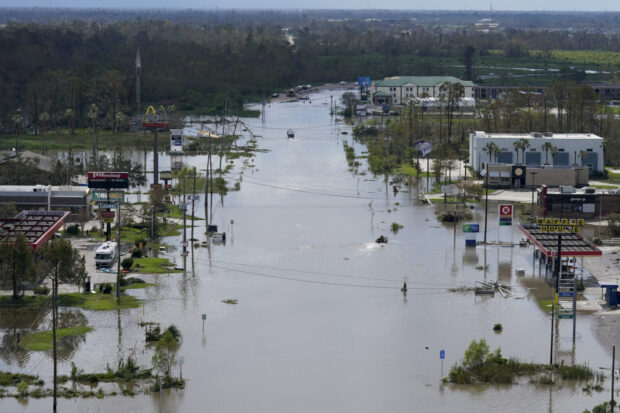Parametric flood insurance is still in its infancy in the United States, but one index-based insurer is preparing to make a splash in five states in early 2023.
FloodFlash is set to begin offering parametric coverage for commercial businesses in Florida, Virginia, Texas, Louisiana and California at the turn of the year.
The London-based insurer recently announced Mark Hara as its North American CEO. He will lead the company’s expansion into the biggest flood insurance market in the world.
“I am thrilled and honored to lead FloodFlash in North America and bring their game-changing parametric product to the U.S.,” said Hara, who possesses new product development and go-to-market experience. “FloodFlash insurance will change the flood insurance market in a really positive way, and I can’t wait to grow our U.S. team and forge lasting broker partnerships.”
The company provides speedy variable payouts by using on-property sensors that monitor for policy triggers, such as rising water levels, and then activate payout processes. FloodFlash says it combines computer models, cloud software and connected technology to provide flood coverage to “those the insurance industry has left behind.”
The coverage also can be paired with National Flood Insurance Program policies and private flood insurance plans. Payout funds can cover business interruption expenses or top up limits.
Unlike traditional insurance, parametric insurance doesn’t pay claims based on the cost of damage but the event itself. A pre-agreed sum of money is issued to policyholders when a certain event happens.
In separate correspondence regarding parametric flood insurance, Craig Poulton, CEO of Salt Lake City-based Poulton Associates, said his company sees parametric as “sacrificing certainty on the part of lenders for flexibility on the part of insureds.”
“Because most catastrophe coverage is required by lenders, this has impeded parametric product uptake,” he added. “We think it is most likely that parametric coverage will find purchase in the future as a component of traditional insurance products.”
R.J. Lehmann, an editor-in-chief and senior fellow at the International Center for Law and Economics, explained that parametric insurance has become a structure of choice for emerging countries participating in global or regional risk pools. He sees parametric as a good way for public sector entities to smooth risk and avoid post-disaster legislation scenarios for any number of potential perils.
“It speeds the time to recovery,” Lehmann said, “and in the public sector space, that makes a lot more sense. You don’t really want to have to deal with the courts or complex contractual language. You just want to get the money out as quickly as possible.”
FloodFlash determines premiums and coverage on a sliding scale that balances water depth and payout. The minimum water depth for coverage begins at 8 inches, and FloodFlash does not have a deductible nor a cap on limit for coverage.
Hara described FloodFlash’s flexibility as “a big benefit.”
“Like I said, it’s not that it replaces all other coverage,” he said. “But I think…it’s a great way to fill in where it never really existed. And obviously, there’s a lot of opportunity with flood, because there’s a reason it’s the biggest risk and the lowest penetration of insurance.”
According to the FloodFlash website, the company’s custom-built sensors measure about 5 feet in length. The slim devices are installed on exterior walls. As soon as the sensor detects flooding, it sends data to FloodFlash, and when the flooding reaches the client’s selected trigger depth, a claim begins.
Types of parametric insurance have been around for years. Life insurance follows an event-triggered model, as do earthquake insurance policies that pay out when magnitude and proximity triggers are met. FloodFlash bills itself as the “first insurance provider to pay catastrophic flood claims as fast as 6 hours after a flood.”
When asked about FloodFlash pricing, Hara said all risks are unique. He did add, though, that brokers “have shared with us that FloodFlash is priced competitive to other flood insurance options in addition to the benefit of the rapid payout based on the sensor.”
According to a report from Allied Market Research, globally, the parametric industry — which includes a variety of types — generated $11.7 billion in 2021. This number is expected to rise to $29.3 billion by 2031. That report lists FloodFlash, Allianz, Chubb, Berkshire Hathaway Specialty Insurance and more as key market players.
“I would encourage the industry to embrace the benefits of parametric insurance,” Hara said, “and look at how it can supplement what they’re currently offering. Or address gaps for their customer base, as well.”
FloodFlash insures only commercial properties. Company leadership has spoken with other insurance carriers and is looking into pairing FloodFlash with their product offerings to help bring flood insurance coverage to more businesses.
(AP Photo/Gerald Herbert)





















 Artificial Intelligence Is Rewriting the Rules for Commercial Lines
Artificial Intelligence Is Rewriting the Rules for Commercial Lines  Rebuilding Negotiation Talent: Why This Skill Is Missing and How to Fix It
Rebuilding Negotiation Talent: Why This Skill Is Missing and How to Fix It  AIG Partners With Amwins, Blackstone to Launch Lloyd’s Syndicate Using Palantir
AIG Partners With Amwins, Blackstone to Launch Lloyd’s Syndicate Using Palantir  Chubb, The Hartford, Liberty and Travelers Team Up on Surety Tech Co. Launch
Chubb, The Hartford, Liberty and Travelers Team Up on Surety Tech Co. Launch 